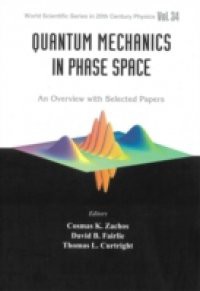Wigner's quasi-probability distribution function in phase space is a special (Weyl) representation of the density matrix. It has been useful in describing quantum transport in quantum optics; nuclear physics; decoherence, quantum computing, and quantum chaos. It is also important in signal processing and the mathematics of algebraic deformation. A remarkable aspect of its internal logic, pioneered by Groenewold and Moyal, has only emerged in the last quarter-century: it furnishes a third, alternative, formulation of quantum mechanics, independent of the conventional Hilbert space, or path integral formulations.In this logically complete and self-standing formulation, one need not choose sides — coordinate or momentum space. It works in full phase space, accommodating the uncertainty principle, and it offers unique insights into the classical limit of quantum theory. This invaluable book is a collection of the seminal papers on the formulation, with an introductory overview which provides a trail map for those papers; an extensive bibliography; and simple illustrations, suitable for applications to a broad range of physics problems. It can provide supplementary material for a beginning graduate course in quantum mechanics.Contents:The Wigner FunctionSolving for the Wigner FunctionThe Uncertainty PrincipleEhrenfest's TheoremIllustration: The Harmonic OscillatorTime EvolutionNondiagonal Wigner FunctionsStationary Perturbation TheoryPropagatorsCanonical TransformationsThe Weyl CorrespondenceAlternate Rules of AssociationThe Groenwold–van Hove Theorem and the Uniqueness of MBs and ∗-ProductsOmitted MiscellanySelected Papers: Brief Historical OutlineReadership: Advanced undergraduates, beginning graduate students and researchers in physics, quantum computing, chemistry and information processing.

